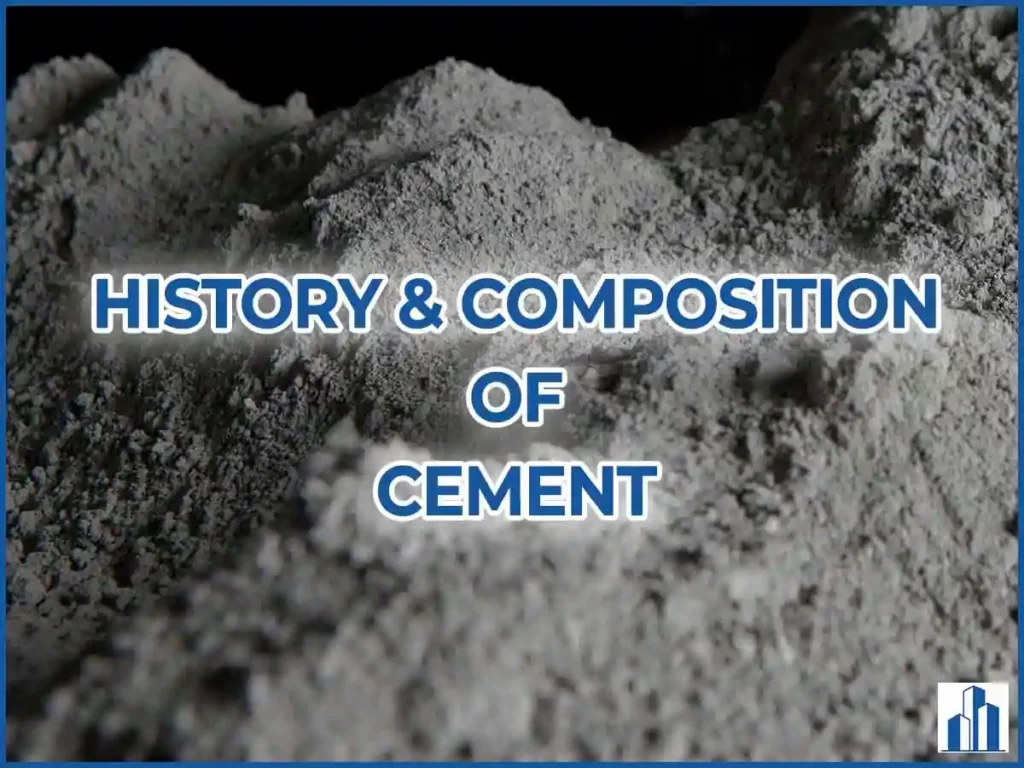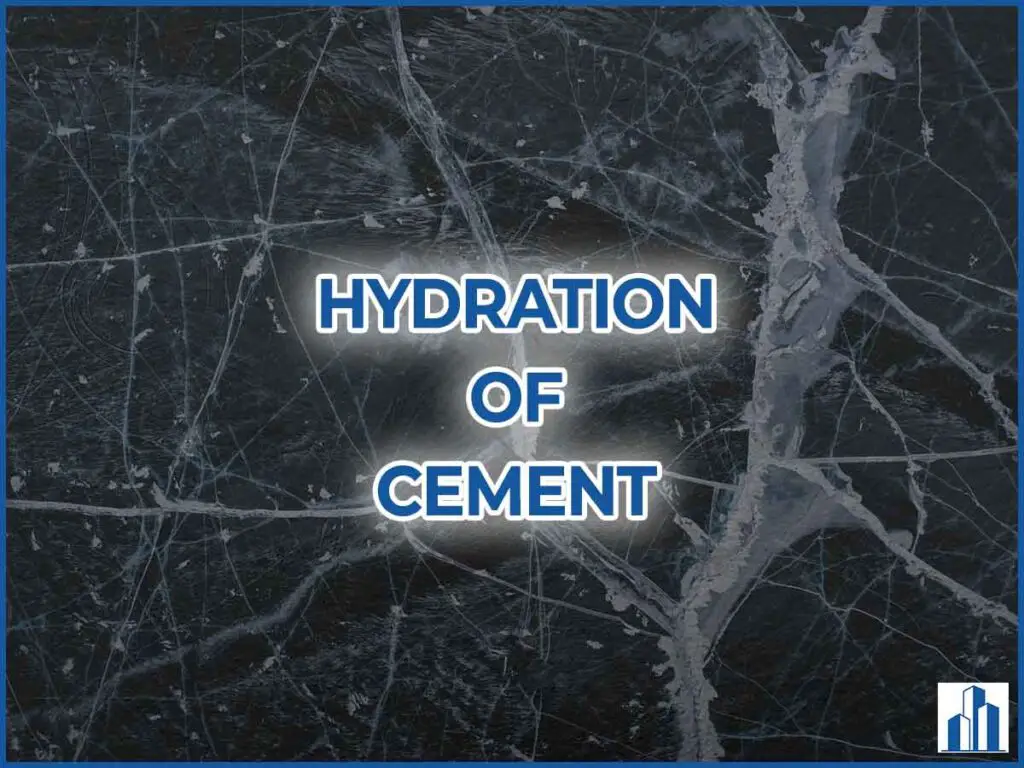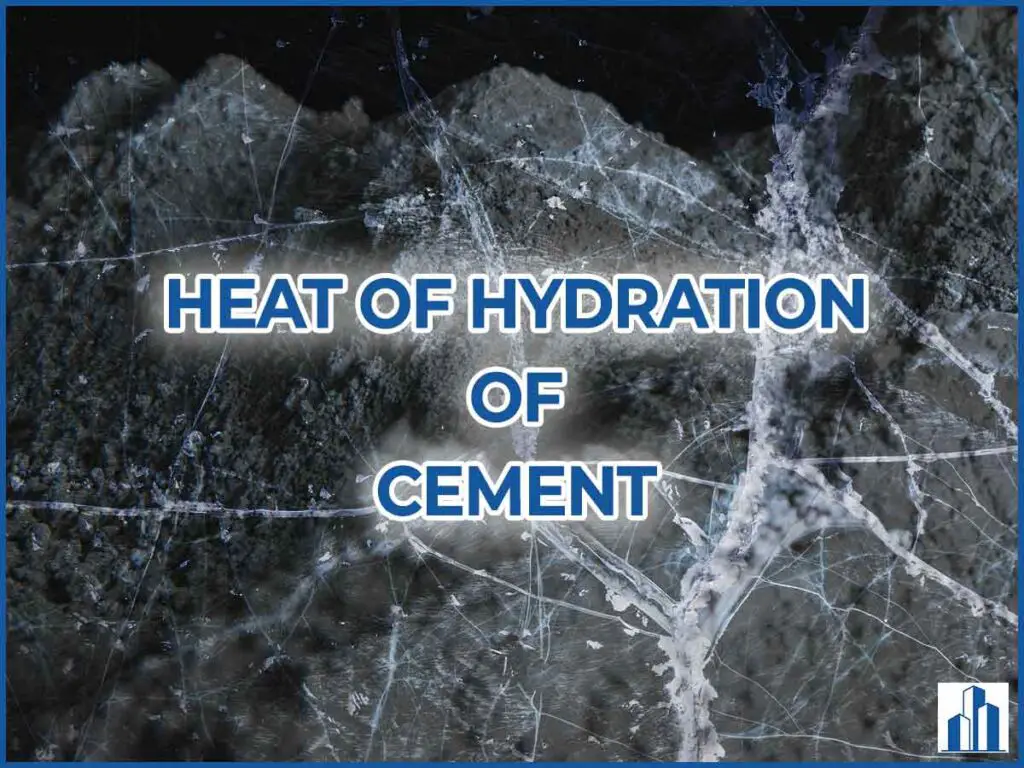CEMENT
Cement is one of the unique and most important building materials in the field of construction. It acts as a binder that sets, hardens, and adheres to the other materials.
It is a fine, soft, powdery type substance made from a mixture of calcareous and argillaceous materials that are found in nature such as limestone, clay, etc.
It possesses both adhesive and cohesive properties which are capable of binding small solid matters into compact durable mass when mixed with water.
HISTORY OF MODERN CEMENT
The early Greeks and Romans used cementing materials which are obtained by burning limestones.
The remarkable hardness of the mortar used in early Roman brickworks is presenting clear and sufficient evidence of the perfection that the art of cementing material had attained in ancient times. The superiority of Roman cement is mainly attributed to the thoroughness of mixing and long-continued ramming.
The Greeks and Romans later became aware of the fact that certain volcanic ash, when mixed with lime yielded mortar that possesses superior strength and durability. Hence Roman builders began to use volcanic ash found near Pozzuoli village near Mount Vesuvius in Italy. These volcanic ashes are mostly siliceous (silica rich) in nature and thus acquired the name Pozzolana.
Later on, the name Pozzolana was applied to any other material either natural or artificial, having nearly the same composition as that of volcanic ash found at Pozzuoli. In the absence of volcanic ash, the Romans used powdered tiles or pottery as pozzolana. The cementing material made by Romans using lime and pozzolana was retained as the chief building material of all work until the 18th century.
The most important investigation into the knowledge of cement was carried out by John Smeaton in 1756, when he was called to rebuild Eddy Stone Light House in Devon, England. He figured out that limestones that contained a considerable proportion of clay matter yielded better lime which possesses superior hydraulic properties.
These experiments make scientists like vicat to investigate more in hydraulic cement production. He prepared an artificial hydraulic lime by calcining a mixture of limestone and clay. This process may be regarded as a leading knowledge in the manufacture of Portland cement.
(NOTE: A hydraulic cement is a cement that becomes adhesive due to a chemical reaction between its ingredients and water. For example: Ordinary Portland Cement (OPC))
The invention of Portland cement is, however, attributed to Joseph Aspdin, a builder and bricklayer who in 1824 began his investigation by mixing hard ground limestone and finely divided clay into the form of slurry and calcined it in a furnace till CO2 was expelled. The mixture was then grounded to a fine powder. He called his cement as Portland cement and patented it on 21st October 1824.
The fancy name Portland was given due to the resemblance of this hardened cement to the natural stone occurring at Portland in England. By 1850, the prototype was enhanced by Isaac Charles Johnson who established factories in 1851 for cement production. During the 20th century, cement manufacturing went worldwide.
CHEMICAL COMPOSITION OF CEMENT
The raw materials required for the manufacturing of Portland cement are calcareous materials such as limestone or chalk and argillaceous materials such as clay or shale. These two raw materials are pulverized, blended, burning at a clinkering temperature, and grinding the resulting clinker to constitute cement. The approximate chemical composition of ordinary Portland cement is given in Table 1.0.
The oxides present in the raw materials interact with one another in the kiln at higher temperatures to form more complex compounds. This is identified by R.H. Bogue. Hence these compounds are called “Bogue’s compounds”.
The cement chemists use short abbreviated notation to describe each oxide by one letter. These notations are called Cement Chemist Notations (CCN). Table 1.1 describes the CCN used for various oxides. The main Bogue compounds, their composition, and CCN are mentioned in Table 1.2.
The silicates, C3S and C2S are mainly responsible for the strength of hardened cement.
C3S is responsible for the Early strength (1st 7 days strength) of cement and produces more Heat of Hydration than C2S. Meanwhile, C2S is responsible for Later strength i.e., Ultimate strength, and produces much less Heat of Hydration than C3S.
C3A contributes little or nothing to the strength of cement but it can be responsible for its quick-setting property. It produces more heat of hydration and it is one of the most undesirable properties of cement.
C4AF is also present in the cement in small quantities and compared with the other compounds it doesn’t affect the behavior significantly. There are also many other minor compounds present in the cement, but these compounds don’t influence as much as when compared to the major compounds listed in Table 1.2.
Another scientist called Tornebohm also observed four different kinds of crystals in the thin section of cement clinker. His description of minerals was found to be similar to the description made by Bogue. Therefore, Bogue’s compounds C3S, C2S, C3A, and C4AF are sometimes in literature called as Alite, Belite, Celite, and Felite respectively.
Hope you have a clear understanding of cement history and its chemical composition. Check out our other articles to learn more about cement and its properties.







Absolutely indited written content, Really enjoyed looking at.